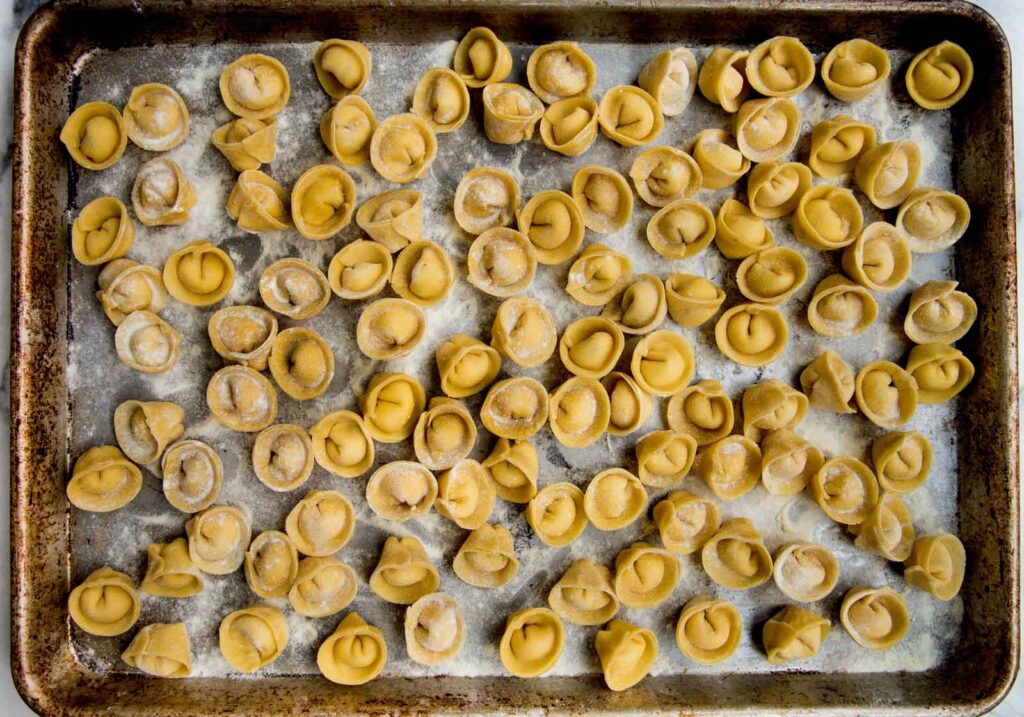This particular pasta shape is called cappelletti, which fittingly means “little hats” in Italian. They’re from Emilia-Romagna, in particular Reggio Emilia, but also found in Lazio, the Marche and Umbria
Cappelletti are often filled with meat and bathed in chicken or capon (aka rooster) broth or alternatively, filled with soft cheese, typically ricotta, cacio raviggiolo, cassatella and/or stracchino, along with grated lemon zest, nutmeg, spinach, parsley or other seasonal greens.
I went vegetarian today and stuffed these cappelletti with a combination of Taleggio (a semi-soft, washed rind, smear-ripened, cow’s milk, Italian cheese), ricotta, mozzarella and Parmesan-Reggiano, garlic, shallot, lemon zest, and fresh thyme, and served them in a Parmesan brodo.
I like to think of cappelletti as little pillows of goodness. The cappelletti have just the right texture and chew. And when you bite into them, you get a delightful burst of cheese. It’s the perfect way to start a meal (primi or first course). Cappelletti freeze well and can go straight from the freezer into a pot of salted boiling water.
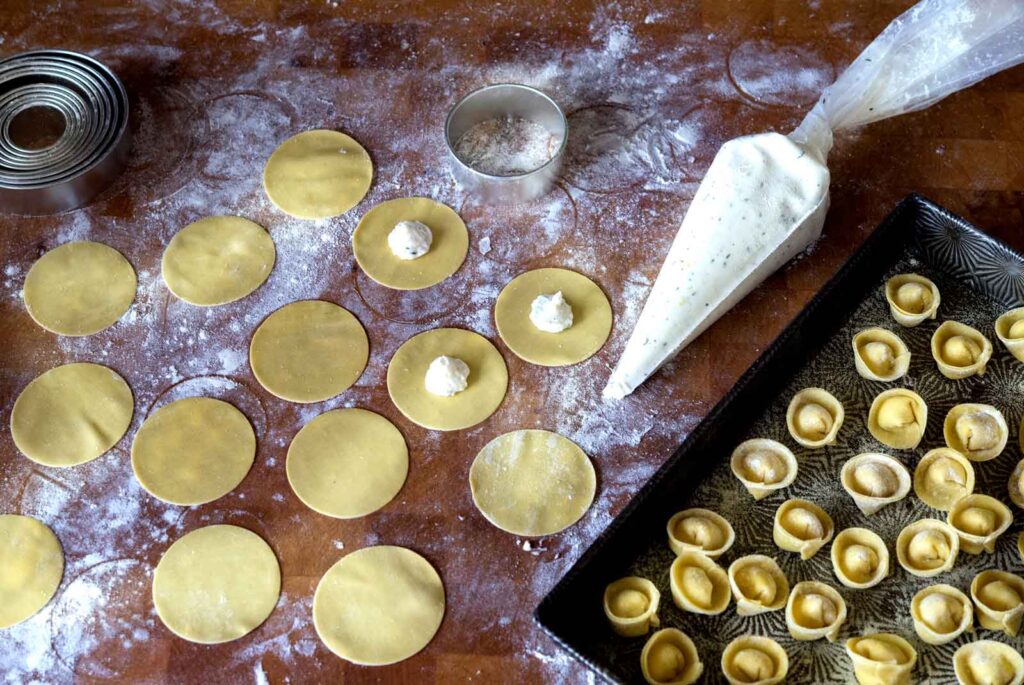
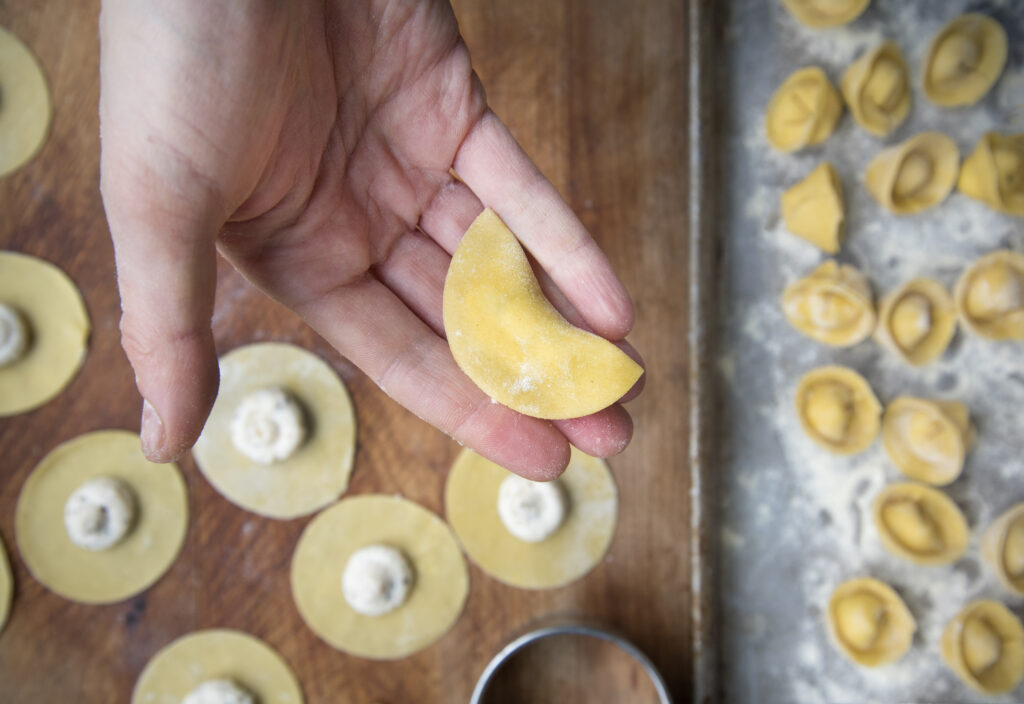
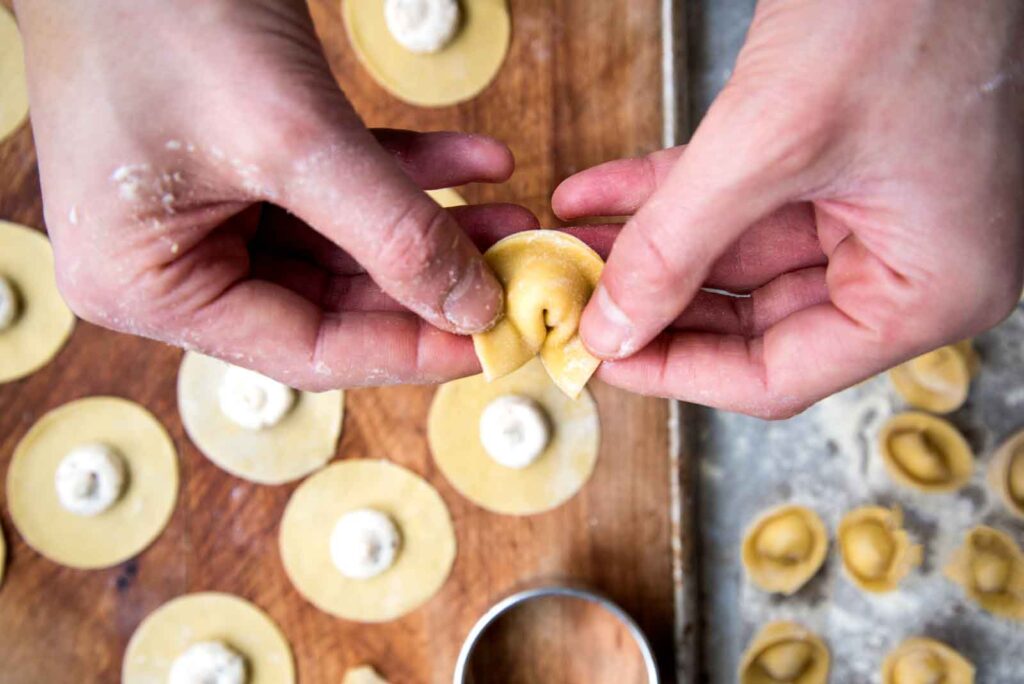
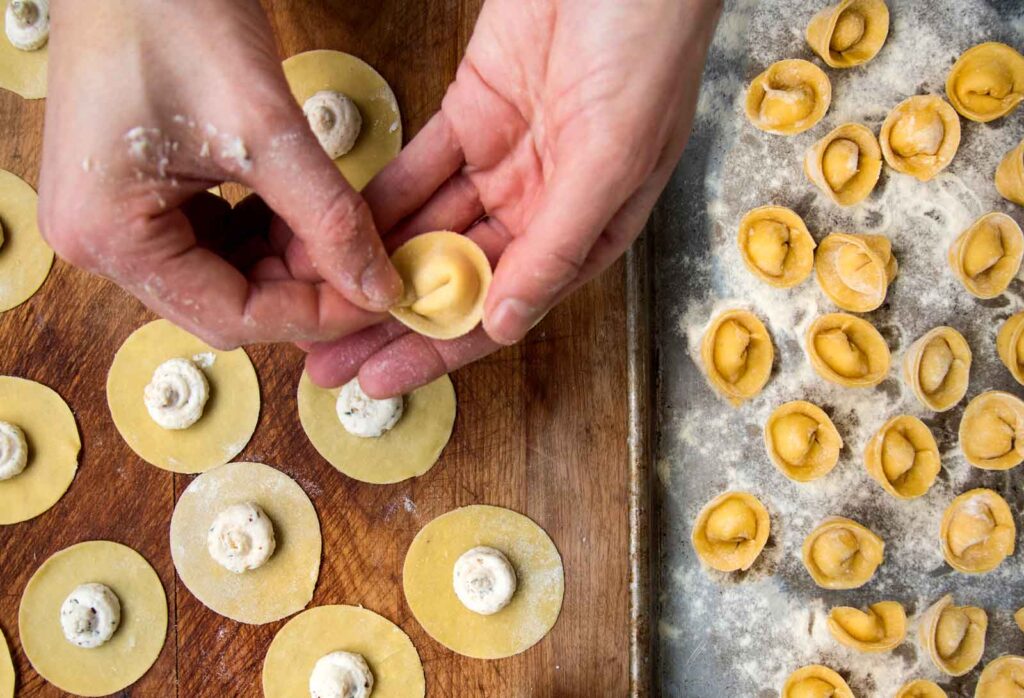
Served in a Parmesan brodo — broth made of onions, garlic, fresh herbs and plenty of Parmesan rinds.
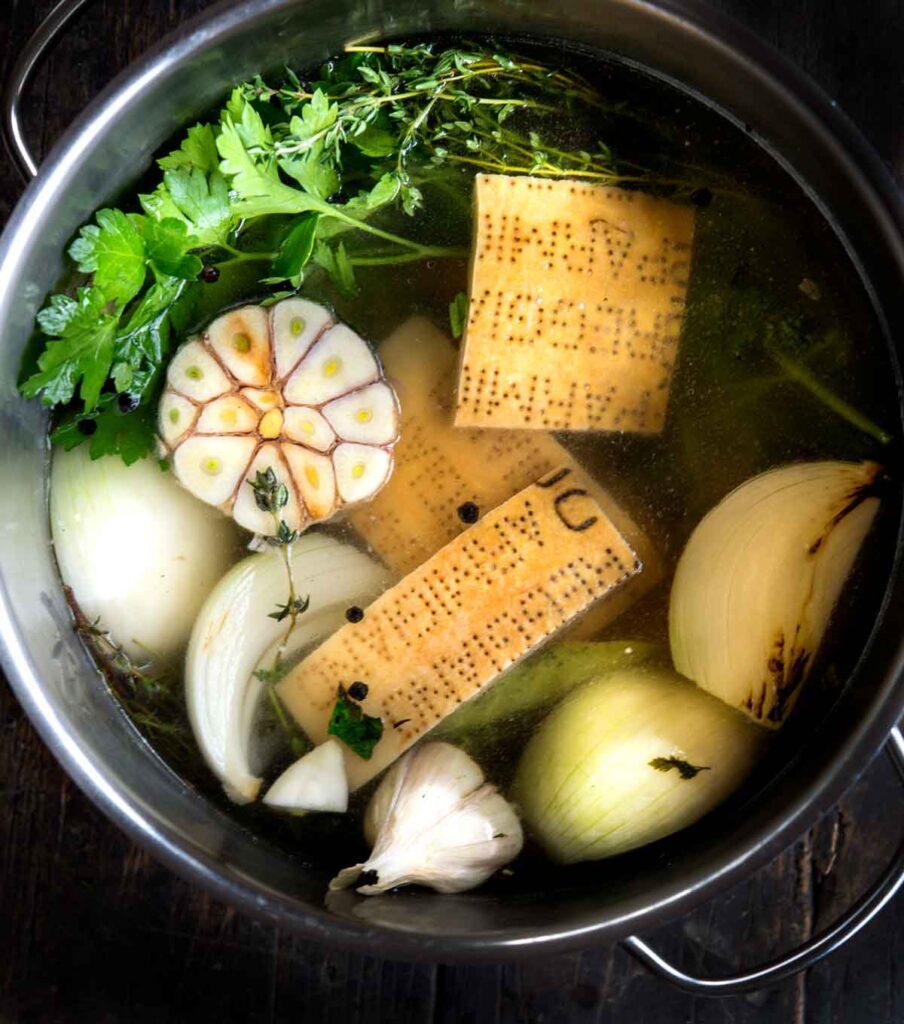

Cappelletti
Ingredients
- 360 to 400 grams 00 flour
- pinch of salt (optional)
- 4 large eggs
- 1/3 pound (5 ounces) Taleggio
- 1 cup (8 ounces) fresh ricotta
- 1/3 cup grated Parmesan
- 1/3 cup grated mozzarella (smoked if you like)
- 1 small garlic clove, minced (about 1 teaspoon)
- 1 small shallot, minced (about 2 teaspoons)
- pinch of chile flakes
- 2 teaspoons fresh thyme, chopped
- 1 teaspoon lemon zest
- few gratings of nutmeg
- salt and pepper
Instructions
- For the dough: Mix the flour (and salt, if using). Place the flour on a dry, clean work surface and form it into a mound. Create a large shallow well in the middle, making sure the walls are high enough to prevent the eggs from escaping.Crack the eggs into the well. With a fork, beat the eggs; be careful not to disturb the walls of the flour. Once the eggs are well beaten, begin to incorporate the flour walls into the egg mixture. Continue incorporating the flour with the eggs with your fork until you have a shaggy, solid mass. At this point, using your hands, start folding and forming the dough, incorporating the rest of the flour until you have a stiff, solid mass (removing any dry clumps of flour).Knead the dough. Drive the palms of your hand into the dough, pushing the dough forward. Continue, rotating the dough and folding the dough over its self, which helps to incorporate air pockets into the dough. Repeat until the dough is firm and bouncy and has a smooth, silken texture, about 10 minutes. Wrap the dough in plastic and let rest 30 minutes.
- For the cheese filling: Place the cheese, garlic, shallot and spices in a food processor. Pulse until well combined. Scoop the mixture into a piping bag.
- To form the cappelletti: Lightly flour your work surface. Cut off a piece of dough, leaving the rest covered. Flatten the piece of dough with a rolling pin. Next, run the dough through your pasta machine starting with the largest setting (typically ‘0’ or ‘1’). Run it one to two times through each successive pasta roller setting until very thin and translucent, about 1/16th of an inch thick (setting 6 or 7 with my KitchenAid roller attachment). Lay the pasta sheet flat. With a ring mold, cut out 2 1/2 ″ rounds, mist gently with water (with a spray bottle), and pipe the filling, about a teaspoon per round.Fold the round in half, to form half moons (mezzalune), pressing out as much air as possible. Bring the pointed edges together and pinch to seal. Place the cappelletti on a sheet pan sprinkled with semolina to prevent sticking. Use right away or let dry out a bit then place the sheet pan in the freezer. When the pasta are frozen, transfer to an air-tight container or zip-lock freezer bag.
- To serve: Bring a large pot of salted water to a boil. Drop in the pasta and cook until al dente. Serve in a flavorful broth of your choosing.

